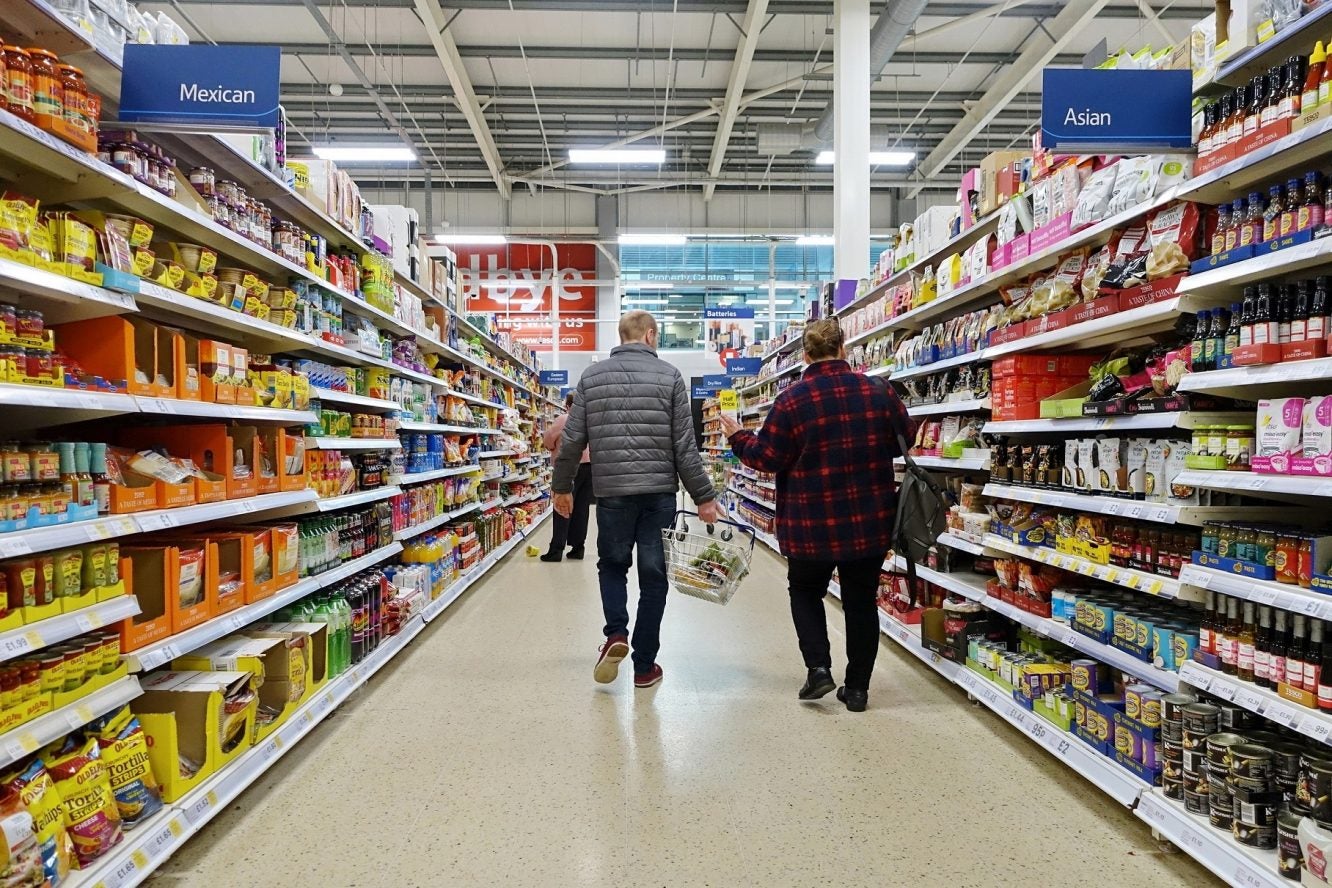[ad_1]

UK food and soft drinks inflation cooled in June but with scant relief for consumers still facing double-digit price increases.
Prices also eased in the overall economy, with headline inflation – measured by the consumer price index – rising 7.9% in the 12 months through June, compared to 8.7% in May, the Office for National Statistics (ONS) reported today (19 July). On a monthly comparison, prices climbed 0.1%, down from 0.8% in June last year.
The annualised inflation rate for food and non-alcoholic beverages continued a retreat from the 19.2% peak reached in March, which was the fastest rate in 45 years, according to the separate CPIH index. However, last month’s print of 17.4% – down from 18.4% in May – was only the smallest increase since January’s 16.8% pace.
While price increases eased in many major food categories such as bread, meat and butter, they remained north of 10% higher than a year earlier. Sugar, which bucked the cooling commodity trend in the United Nations’ food price index in June, was up a whopping 53.6% on an annualised basis.
Karen Betts, the CEO of the UK industry body the Food and Drink Federation, highlighted the plight manufacturers are still up against, particularly in terms of ingredients costs.
“Food and drink manufacturers’ costs remain 33% higher than they were three years ago,” Betts said in a statement. “Our sector is still dealing with many higher-than-normal ingredient costs and volatile and higher-than-normal energy prices, alongside persistent labour shortages.”
Commodity concerns
Adding to those UK labour shortages – largely as a consequence of Brexit depleting the availability of foreign workers – are the heatwaves playing out in Europe and the decision by Russia not to renew a deal for the passage of grains out of Ukraine, one of the world’s largest exporters of wheat.
“Global weather events – such as the heatwave currently affecting much of Europe – are also increasingly affecting agricultural output and seasonal supplies and will have an impact on prices,” Betts added. “Russia’s decision to pull out of the Black Sea grain deal is unhelpful too and brings new risks to global grain supplies.
“We need the government to continue to work with us rapidly and decisively to mitigate these issues – for example in simplifying regulation to help reduce cost burdens and create the conditions for growth.”
There was also some respite in the monthly numbers for food and soft drink prices, which were up just 0.4% in June, compared to 1.2% in the same month a year earlier, the ONS’s CPIH measure, which includes owner occupier’s hosting costs, showed.
In that same index, bread and cereals prices rose 16.7% in the 12 months through June, down from 17.7% in May. Bread alone increased 13.7% (15.3% in May), while the cost of butter was up 7.1%, down from 14.1%.
The cost of meat was 14% higher than a year earlier, versus 16.3% in May, while fish prices climbed 12.9%, compared to 16.6%.
On the drinks front, non-alcoholic beverages were up 16.4% overall as opposed to 14% in May, and the price of coffee rose 11.4%, compared to 9.2%. Soft drinks climbed 14.2%, down from a 11.9% print.
Betts added: “Food manufacturers continue to do all they can to keep price rises to a minimum, making savings wherever possible while paying a fair price to their suppliers. But the impact on our sector is clear, with insolvencies on the rise particularly among smaller businesses, investments paused and vacancies unfilled – all of which is also having a negative impact on future growth.”
[ad_2]
